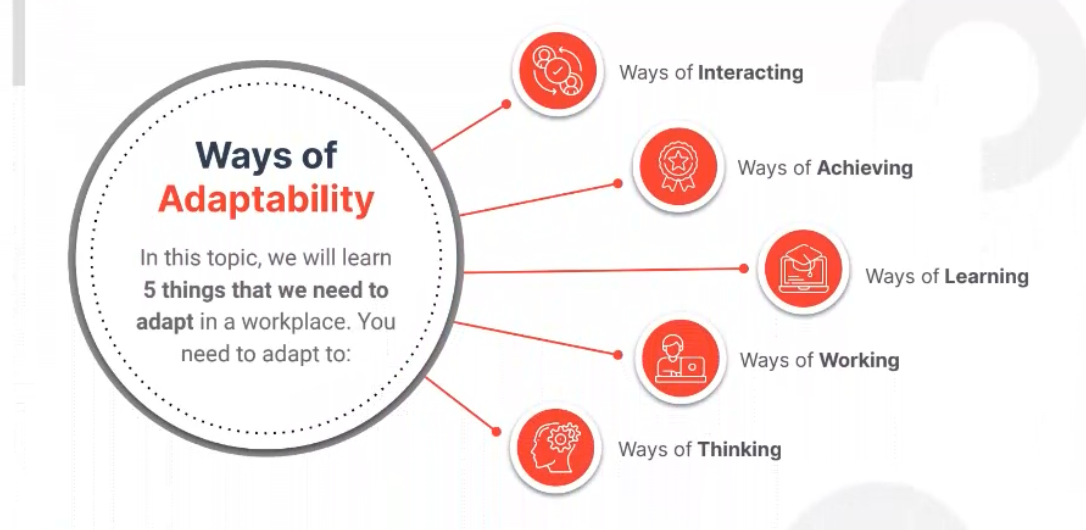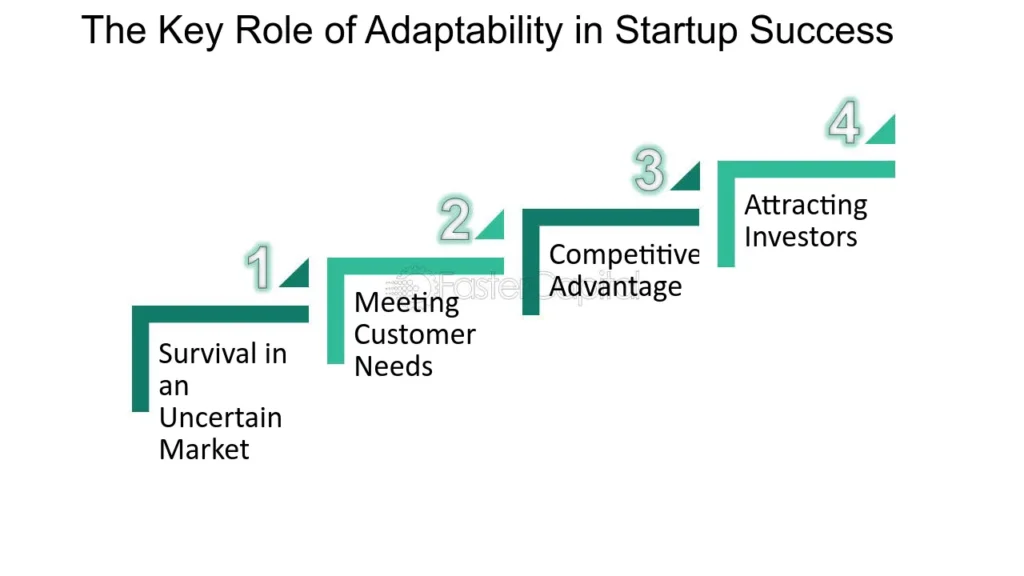Staying Ahead of the Curve: The Importance of Adapting to Market Trends
February 25, 2024 | by seotoolsethub.com

Market trends refer to the general direction in which a market or industry is moving. These trends can include changes in consumer behavior, emerging technologies, and shifts in industry practices. Staying ahead of market trends is crucial for businesses as it allows them to anticipate changes and adapt their strategies accordingly.
In today’s fast-paced business environment, staying ahead of the curve is more important than ever. With technology advancing at an unprecedented rate and consumer preferences constantly evolving, businesses that fail to keep up with market trends risk falling behind their competitors.
This blog post aims to explore the benefits of adapting to market trends, as well as the risks associated with ignoring them. It will also provide insights into how businesses can identify and analyze market trends, develop strategies for adaptation, and leverage innovation, flexibility, and technology to stay ahead of the curve.
Key Takeaways
- Adapting to market trends is crucial for staying ahead of the curve.
- Ignoring market trends can lead to missed opportunities and decreased competitiveness.
- Identifying and analyzing market trends is essential for developing a strategy for adaptation.
- Innovation and flexibility are key factors in successfully adapting to market trends.
- Companies that embrace change and adapt to market trends are more likely to succeed in the long run.
The Benefits of Adapting to Market Trends
Adapting to market trends offers numerous benefits for businesses across industries. Firstly, it increases competitiveness by allowing companies to differentiate themselves from their competitors. By understanding what customers want and need at any given time, businesses can tailor their products or services accordingly and gain a competitive edge.
Moreover, adapting to market trends leads to improved customer satisfaction. When companies can meet changing customer demands promptly and effectively, they build stronger relationships with their target audience. This not only enhances customer loyalty but also attracts new customers through positive word-of-mouth recommendations.
Furthermore, adapting to market trends has a direct impact on revenue generation and profitability. By aligning products or services with current demand patterns or emerging markets early on, companies can tap into new revenue streams before their competitors do so.
Lastly but equally important is brand reputation improvement which comes from being seen as an innovative company that stays relevant in a rapidly changing marketplace by embracing new ideas and approaches.
The Risks of Ignoring Market Trends
On the flip side, ignoring market trends can have severe consequences for businesses. One of the most significant risks is the loss of market share. When companies fail to adapt to changing customer preferences or emerging technologies, their competitors who do so gain a competitive advantage and attract customers away from them.
Additionally, ignoring market trends can lead to decreased revenue and profitability. If a company’s products or services become outdated or irrelevant due to changing market dynamics, customers will naturally gravitate towards more innovative alternatives offered by competitors.
Furthermore, failing to adapt to market trends can negatively impact brand reputation. In today’s digital age where information spreads rapidly through social media and online reviews, businesses that are perceived as being out of touch with current trends may face backlash from customers and suffer reputational damage.
Lastly, ignoring market trends increases the risk of facing increased competition. As new players enter the market with innovative solutions tailored to current demand patterns, established companies that fail to adapt may find themselves struggling against these new entrants.
Identifying and Analyzing Market Trends
| Consumer Behavior | The study of how individuals, groups, and organizations select, buy, use, and dispose of goods, services, ideas, or experiences to satisfy their needs and wants. | Helps businesses understand their target audience and create effective marketing strategies. |
| Competitor Analysis | The process of identifying and evaluating the strengths and weaknesses of competitors in the market. | Allows businesses to stay ahead of their competition and make informed decisions. |
| Industry Trends | The overall direction in which an industry is moving, including changes in technology, consumer preferences, and regulations. | Helps businesses identify new opportunities and adapt to changes in the market. |
| Market Segmentation | The process of dividing a market into smaller groups of consumers with similar needs or characteristics. | Allows businesses to tailor their marketing efforts to specific groups and increase their chances of success. |
To effectively adapt to market trends, businesses must first identify and analyze them. This requires conducting thorough market research on an ongoing basis.
One way companies can identify market trends is by analyzing customer behavior. By closely monitoring consumer preferences and purchasing patterns through data analysis tools or surveys, businesses can gain valuable insights into what drives their target audience’s decision-making process.
Monitoring industry trends is another crucial aspect of identifying relevant changes in the marketplace. By staying informed about industry news through trade publications or attending conferences and networking events within their sector, companies can stay ahead of emerging developments that may impact their business.
Moreover, keeping an eye on emerging technologies is essential for understanding how they might disrupt existing markets or create new opportunities. By tracking technological advancements in related industries or collaborating with technology partners who specialize in innovation-driven sectors such as artificial intelligence (AI) or blockchain technology; businesses can anticipate how these advancements might shape future consumer demands.

Developing a Strategy for Adapting to Market Trends
Once market trends have been identified and analyzed, businesses must develop a strategy for adapting to them. This involves setting clear goals and objectives that align with the identified trends.
Setting goals and objectives provides businesses with a roadmap for success. By defining specific targets related to market trends, companies can focus their efforts on areas that will have the most significant impact on their ability to adapt successfully.
Creating an action plan is another crucial step in developing a strategy for adaptation. This involves outlining the specific steps or initiatives that need to be taken to align the business with market trends. It may include product development, marketing campaigns, operational changes, or strategic partnerships.
Allocating resources is also essential when developing an adaptation strategy. Businesses must ensure they have the necessary financial and human resources available to implement their action plan effectively. This may involve reallocating budgets or hiring additional staff with expertise in relevant areas.
Measuring success is the final step in developing an adaptation strategy. By establishing key performance indicators (KPIs) and regularly monitoring progress against these metrics, businesses can evaluate whether their efforts are yielding positive results and make adjustments as needed.
The Role of Innovation in Staying Ahead of the Curve
Innovation plays a critical role in adapting to market trends successfully. Companies that embrace innovation are more likely to identify new opportunities arising from changing customer needs or emerging technologies before their competitors do so.
One example of an innovative company that has consistently stayed ahead of market trends is Apple Inc. Through its relentless focus on design excellence and user experience, Apple has been able to anticipate consumer demands and shape entire industries such as smartphones, tablets, and wearable technology.
Another example is Tesla Inc., which revolutionized the automotive industry by introducing electric vehicles when traditional automakers were slow to respond to growing concerns about climate change and rising fuel prices. By combining cutting-edge technology with sustainable transportation solutions, Tesla has become a leader in the electric vehicle market.
The Importance of Flexibility in Adapting to Market Trends
Flexibility is crucial for businesses looking to adapt to market trends successfully. Being open to change and willing to adjust strategies or operations as needed allows companies to respond quickly and effectively when new trends emerge.
Adapting quickly to new trends requires a culture of agility within an organization. This means empowering employees at all levels to make decisions and take action based on changing market dynamics. It also involves fostering a learning mindset that encourages experimentation, risk-taking, and continuous improvement.
An example of a company that exemplifies flexibility in adapting to market trends is Netflix. Originally a DVD rental service, Netflix recognized the shift towards digital streaming early on and pivoted its business model accordingly. By embracing technology and investing heavily in original content production, Netflix has become the dominant player in the global streaming industry.
The Role of Technology in Adapting to Market Trends
Technology plays a pivotal role in helping businesses stay ahead of the curve by enabling them to leverage data-driven insights, automate processes, and deliver personalized experiences at scale.
One example of how technology can be used effectively is Amazon.com Inc., which has revolutionized e-commerce through its use of advanced algorithms for product recommendations and personalized marketing campaigns. By analyzing customer data collected from millions of transactions daily, Amazon can anticipate individual preferences accurately and tailor its offerings accordingly.
Another example is Airbnb Inc., which disrupted the hospitality industry by leveraging technology platforms that connect travelers with unique accommodations offered by individuals worldwide. Through its user-friendly website or mobile app interface; Airbnb provides travelers with access not only traditional hotels but also to private homes or apartments; catering directly to changing consumer preferences for more authentic travel experiences.

The Impact of Globalization on Market Trends
Globalization has had a profound impact on market trends as it enables companies from different countries or regions around the world; to compete directly with one another and access new markets previously inaccessible.
Globalization affects market trends in several ways. Firstly, it increases competition as companies from different parts of the world can now offer similar products or services to a global customer base. This forces businesses to constantly innovate and differentiate themselves to stand out in crowded marketplaces.
Secondly, globalization leads to the spread of ideas and best practices across borders. As companies from different countries interact and collaborate; they bring with them unique perspectives, knowledge, and expertise that can shape local markets or influence consumer preferences.
Last but equally important is the importance of understanding global trends for businesses looking to expand internationally. By staying informed about economic, social, or political developments in key markets around the world; companies can anticipate how these factors might impact their business operations or create new growth opportunities.
Case Studies: Companies that Successfully Adapted to Market Trends
Several companies have successfully adapted to market trends by embracing change and innovating their business models accordingly. One such example is Nokia Corporation; which was once a dominant player in the mobile phone industry but failed to adapt quickly enough when smartphones emerged as a disruptive technology.
However, Nokia has since reinvented itself by focusing on other areas such as telecommunications infrastructure equipment; software development for 5G networks; and virtual reality solutions for healthcare applications among others. By diversifying its product portfolio and leveraging its existing expertise in network technologies; Nokia has been able to regain relevance within an evolving marketplace.
Another example is Starbucks Corporation which recognized early on that consumers were seeking more than just a cup of coffee when visiting cafes. By creating an inviting atmosphere where customers could relax or work while enjoying high-quality beverages; Starbucks differentiated itself from traditional coffee shops and established itself as a lifestyle brand synonymous with premium coffee experiences.
Embracing Change To Stay Ahead Of The Curve
In conclusion, adapting to market trends is crucial for businesses looking not only to survive but thrive in today’s rapidly changing business landscape. By understanding the significance of market trends and the benefits of adapting to them; companies can position themselves for long-term success.
The risks of ignoring market trends are significant, including loss of market share, decreased revenue and profitability, negative impact on brand reputation, and increased competition. However; by identifying and analyzing market trends; developing a strategy for adaptation; embracing innovation, flexibility, and technology; understanding the impact of globalization on market trends; and learning from successful case studies; businesses can stay ahead of the curve.
Embracing change is not always easy but it is necessary for growth. By continuously monitoring market dynamics and being open to new ideas or approaches; businesses can position themselves as leaders within their industries while delivering value to their customers. In today’s fast-paced world where disruption is constant, staying ahead of the curve has never been more critical.
RELATED POSTS
View all


